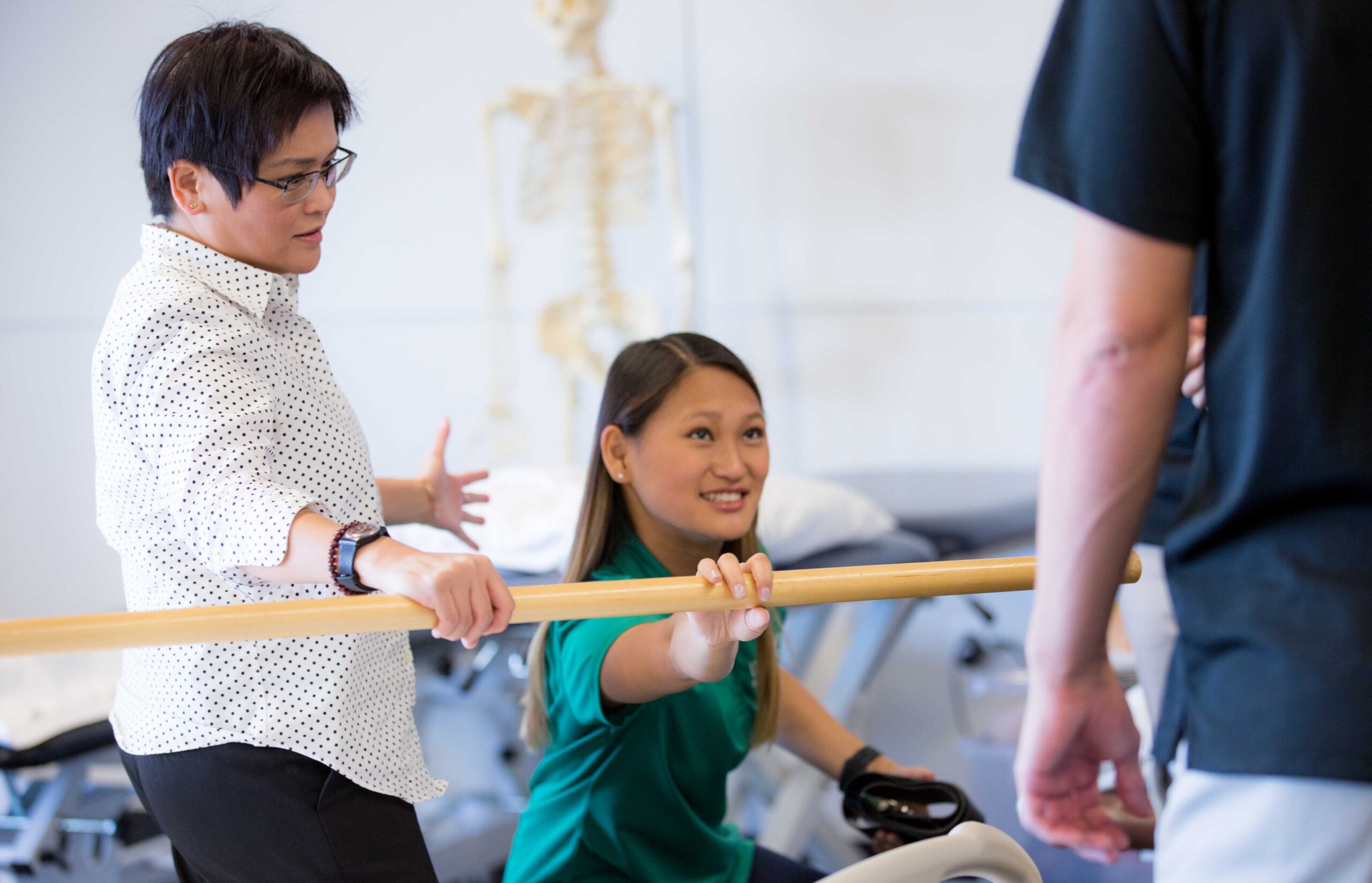Friday, August 8, 2025
 Faculty from UNT Health Fort Worth have played a key role in shaping the future of interprofessional education by contributing
to the ACAPT Blueprint for Excellence: Essentials for a Doctor of Physical Therapy Program. The digital resource, published by the American Council of Academic Physical Therapy,
is designed to provide guidance for programs seeking to advance the field of physical
therapy education.
Faculty from UNT Health Fort Worth have played a key role in shaping the future of interprofessional education by contributing
to the ACAPT Blueprint for Excellence: Essentials for a Doctor of Physical Therapy Program. The digital resource, published by the American Council of Academic Physical Therapy,
is designed to provide guidance for programs seeking to advance the field of physical
therapy education.
Dr. Myles Quiben, a professor in UNT Health’s Department of Physical Therapy, served as the primary author of the chapter Interprofessional Education and Collaborative Practice. Developed by a multidisciplinary team spanning physical therapy, pharmacy, public health and physician assistant studies, the chapter offers historical context, best practices and training recommendations to enhance IPE within health professions education.
Other UNT Health contributors include Dr. Teresa Wagner, associate professor in the Department of Population & Community Health; Dr. Adenike Atanda-Oshikoya, associate professor of pharmacotherapy and assistant dean at the UNT System College of Pharmacy; and Dr. Kate Taylor, assistant dean in the College of Nursing. The team also collaborated with Dr. Meredith Quinene, inaugural program director of Baylor University’s hybrid physician assistant program, and Dr. Bobby Belarmino, an assistant professor at UT Health San Antonio.
“The goal of this chapter is to provide a roadmap for health professions educators looking to integrate interprofessional collaboration into their curricula,” Quiben said. “By preparing students to work effectively across disciplines, we help ensure better patient outcomes and a stronger health care system.”
Interprofessional education brings together students from different health disciplines to learn with, from and about each other to improve collaboration and health outcomes. As health care continues to move toward a team-based model, IPE has become an essential component of education in physical therapy and beyond. Research has shown that interprofessional education improves communication skills, fosters teamwork and enhances patient safety. By exposing students to collaborative learning early in their training, they are better equipped to function in real-world clinical settings where multiple providers must coordinate patient care effectively.
The Blueprint for Excellence serves as a continually evolving resource that provides essential guidance for physical therapy programs. Other featured topics in the e-book include curricular design and delivery, diversity and inclusion, student success, research, faculty development, and simulation-based education. The blueprint aims to establish a foundation for DPT programs that will help them evolve alongside advances in healthcare, technology and educational methodologies.
“As an editor of the textbook, I am particularly excited about the excellent chapter on interprofessional education,” said Dr. Scott Ward, a professor in the University of Utah’s Department of Physical Therapy and Athletic Training. “Interprofessional care is the best model for health care. This chapter, by example, models that effort as the authors represent different healthcare professions. The authors, led by Dr. Myla Quiben, have produced a chapter wherein the purpose and importance of interprofessional education and care is clearly addressed. The chapter includes expectations for training and competencies, models of delivery, implantation opportunities and challenges, encouraging faculty about the process. The text provides valuable resources that are available for programs.”
Quiben, a leading advocate for interprofessional collaboration, has also been recognized nationally for her contributions. She was recently named vice chair of the Interprofessional Education and Practice Special Interest Group within the American Physical Therapy Association’s Academy of Education, underscoring her ongoing commitment to advancing IPE in physical therapy education. She has spent years developing programs and spearheading initiatives that bring faculty and students together across disciplines to promote collaboration and innovative teaching methods. Her work reflects a growing emphasis within physical therapy education on integrating interprofessional competencies into clinical training.
“Ultimately, we are preparing students to become better clinicians — ready to thrive in today’s highly collaborative healthcare environment, Quiben said. “Through learning with, from and about each other, they build essential communication and teamwork skills that translate into more integrated and effective patient care. For health professions faculty, interprofessional and interprofessional education is not only an accreditation expectation, but also a vital component of quality education. This chapter introduces the foundational concepts to support physical therapy and other health professions educators in advancing collaborative practice.”
The Blueprint for Excellence is expected to be a key resource for physical therapy educators nationwide, equipping them with the tools to implement effective interprofessional training. By contributing to this initiative, UNT Health faculty continue to position themselves as leaders in health professions education, ensuring that future practitioners are well-prepared for collaborative, patient-centered care.
For more information on the ACAPT Blueprint for Excellence, visit ACAPT’s website.
From HSC Newsroom - Research by Eric Griffey